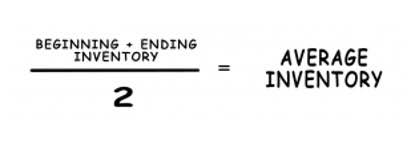
Excluding these transactions, the major source of change in a company’s equity is retained earnings, which are a component of comprehensive income. The par value of issued stock is an arbitrary value assigned to shares in order to fulfill state law. The par value is typically set very low (a penny per share, for example) and is unrelated to the issue price of the shares or their market price. In short, there are several ways to calculate stockholders’ equity (all of which yield the same result), but the outcome may not be of particular value to the shareholder.

How to Calculate Average Shareholder Equity
- In terms of dividend payments, there are four critical dates, and two of them call for particular accounting treatments in terms of journal entries.
- Other creditors, including suppliers, bondholders, and preferred shareholders, are repaid before common shareholders.
- Companies are under no duty to distribute dividends unless the board has legally declared them.
- A line item for the shareholder’s equity can be found in the balance sheet of a business or enterprise.
- A firm typically can raise capital by issuing debt (in the form of a loan or via bonds) or equity (by selling stock).
Where the difference between the shares issued and the shares outstanding is equal to the number of treasury shares. The last period’s ending number is the same as this period’s beginning number. In some cases, a company’s financial statements may include a table called the reconciliation of stockholders’ equity. In that case, the beginning stockholders’ equity will be listed at the beginning of that table. The total stockholders’ equity for a given period represents the total at the end of the period.
How Shareholder Equity Works

The book value assigned to fixed assets may be higher or lower than market value, depending on whether they’ve appreciated or depreciated over time. Let us take the annual report of Apple Inc. for Accounting Periods and Methods the period ended on September 29, 2018. As per the publicly released financial data, the following information is available.
The Formula for the Shareholder Equity Ratio Is

Higher ROE metrics relative to comparable companies imply increased value creation using less equity capital, which is precisely what equity investors pursue when evaluating investments. The issuance of $5m in preferred dividends by Company A decreases the net income attributable to common shareholders. The optionality to raise capital is applicable to all companies and a trait that investors seek in potential investments (and the management team). It represents proof of a company’s ability to efficiently use capital and execute thoughtful strategic decisions.

In this example, that lower ROE calculation isn’t necessarily a fair performance metric because the new capital hasn’t had a chance to be invested how to calculate total stockholders equity in profitable opportunities. Over time, that new capital will be deployed and should drive higher profits and ROE. The house has a current market value of $175,000, and the mortgage owed totals $100,000. Sam has $75,000 worth of equity in the home, or $175,000 (asset total) – $100,000 (liability total).
- To determine total assets for this equity formula, you need to add long-term assets as well as the current assets.
- Shareholders Equity is the difference between a company’s assets and liabilities, and represents the remaining value if all assets were liquidated and outstanding debt obligations were settled.
- The share capital represents contributions from stockholders gathered through the issuance of shares.
- By comparing total equity to total assets belonging to a company, the shareholders equity ratio is thus a measure of the proportion of a company’s asset base financed via equity.
- The return on equity (ROE) cannot be used as a standalone metric, as it is prone to be affected by discretionary management decisions and one-time events.
Discussion: how do stock buybacks affect shareholder equity?
Alternatively, ROE can also be derived by dividing the firm’s dividend growth rate by its earnings retention rate (1 – dividend payout ratio). The simplest way to determine beginning stockholders’ equity is to look it up on the company’s https://www.bookstime.com/articles/online-store-inventory-management-guide balance sheet. The stockholders’ equity section follows the liabilities section on the balance sheet. It will show the total stockholders’ equity for the period, including its constituent parts, like common stock, preferred stock, and so on. Assets represent the valuable resources controlled by a company and liabilities represent its obligations.

